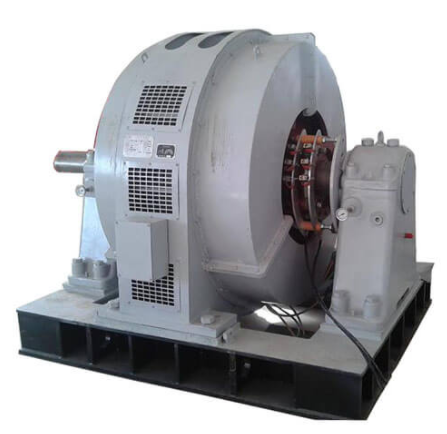How to start a large synchronous motor is essential because synchronous motors are not inherently self-starting. To achieve synchronization, these motors require auxiliary techniques to accelerate the rotor to near synchronous speed before engaging the field excitation. This article covers the different Synchronous Motor Starting Methods, explains Synchronous Motor Starting Torque, and highlights the role of Synchronous Motor Starters.
Synchronous motors, unlike induction motors, cannot start on their own due to their rotor design. When powered by an AC supply at 50 or 60 Hz, synchronous motors only generate torque at synchronous speed. Therefore, specific Synchronous Motor Starting Methods are required to initiate motion.
In this method, a smaller auxiliary motor, known as a pony motor, is used to accelerate the synchronous motor to near synchronous speed before applying DC excitation.
Power Up the Pony Motor:
Start the pony motor to gradually accelerate the synchronous motor toward synchronous speed.
Apply Rotor Field Excitation:
Once the motor reaches near synchronous speed, energize the DC field windings on the rotor.
Synchronization:
The rotor magnetic field aligns with the stator's rotating magnetic field, allowing the motor to lock in and run at synchronous speed.
Some synchronous motors are equipped with damper windings (similar to squirrel cage bars) to allow them to start like induction motors.
When the motor starts, the damper windings generate torque due to electromagnetic induction.
As the rotor accelerates to near synchronous speed, the DC excitation is applied, and the motor transitions to synchronous operation.
Some synchronous motors incorporate slip rings to facilitate an induction motor start.
The motor initially operates as an induction motor using slip rings.
Once near synchronous speed, DC excitation is applied, and the motor locks into synchronous speed.
A small DC machine can be coupled to the synchronous motor to provide initial acceleration.
40p 1600KW High Voltage Permanent Magnet Synchronous Motor
Synchronous Motor Starting Torque refers to the torque required to bring the motor to synchronous speed. Because synchronous motors cannot produce starting torque without external assistance, methods like pony motors and damper windings help achieve this initial motion. Ensuring adequate starting torque is crucial for applications with high initial load demands.
For permanent magnet synchronous motors used in variable speed drives, a PWM inverter can start the motor by gradually increasing frequency.
Determine the initial rotor position.
Slowly ramp up the motor speed using a reduced frequency.
Achieve high starting torque gradually.
Selecting the appropriate Synchronous Motor Starter depends on factors such as motor size, load conditions, and application requirements. Whether using a pony motor, damper windings, or slip-ring induction start, the goal is to achieve seamless synchronization.
Motor Specifications: Follow manufacturer guidelines for starting procedures.
Load Conditions: Heavy loads may require specialized starting methods.
Safety Procedures: Ensure electrical isolation and use protective equipment.

Synchronous Motors for Air Separation Applications
Synchronous Motor Starting Methods are crucial for reliable motor operation. By understanding the various techniques, including pony motor starts, damper windings, and slip-ring methods, you can ensure efficient synchronization and optimal performance. Proper knowledge of Synchronous Motor Starting Torque and Synchronous Motor Starters helps in selecting the right approach for your needs.
If you need more details or assistance with Synchronous Motor Starting Methods, contact ZCL now!
Copyright © ZCL Electric Motor Technology Co., Ltd. All Rights Reserved | Sitemap | Powered by 